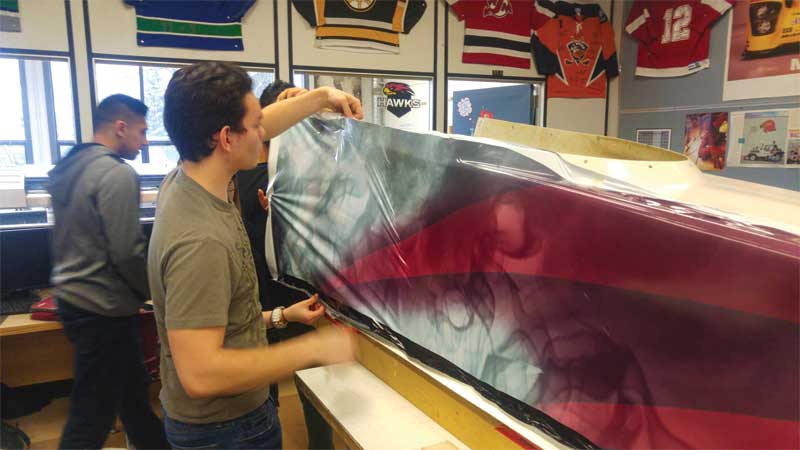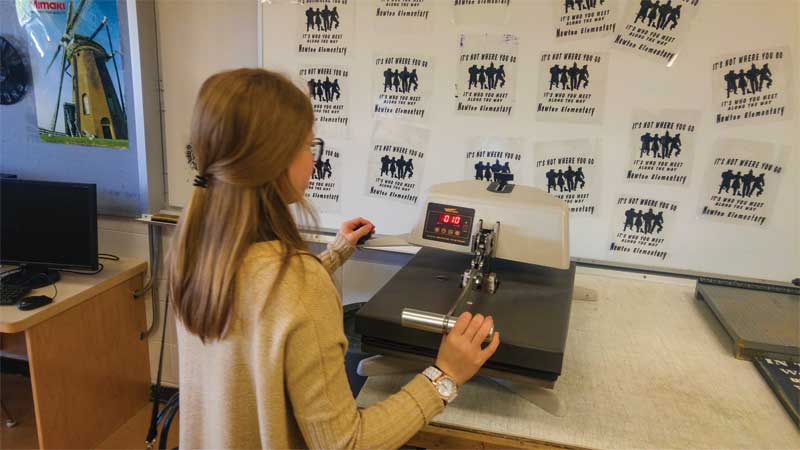Nationally endorsed

To augment the classwork accordingly, students commit to week-long work placements before their exams at the end of the school year.
Liversidge began speaking with SAC about a certification in 2014 and got an enthusiastic response. By the fall of 2016, endorsed by SAC through its British Columbia chapter, he was running a ‘pilot’ class of six students.
“The idea was they would come out of the class certified the following June,” he explains.
To augment the classwork accordingly, Liversidge had the students commit to week-long work placements before their exams at the end of the school year.
“On-the-job training is important and there are lots of family-owned sign shops where they can get it,” he says. “Years ago, the Northern Alberta Institute of Technology (NAIT) in Edmonton had a sign arts program that took a similar approach.”
Once they have completed the program, the students are endorsed with SAC Level 1 Certification, which addresses the use of vinyl cutting software. Liversidge’s vision has been to add Level 2 for digital wide-format printing of banners and wraps and Level 3 for CNC routing and laser engraving.
“Most of the jobs the students get are still entry-level, but it is a huge relief to sign shop owners when they can get a recent student to do some of the work they would otherwise have to do themselves,” says Liversidge. “That way, the owner can focus on the business end of things. It’s a win-win.”
Getting the technology into schools
The next step will be to expand the program, so other students across the country can also participate.
“There aren’t a lot of schools today that teach signmaking classes,” Liversidge admits. “In Vancouver, the Emily Carr University of Art and Design focuses on graphic design for packaging and retail applications. And in Toronto, students at Ryerson University’s School of Graphic Communications Management (GCM) have earned scholarships from the Specialty Graphic Imaging Association (SGIA).”
And given those are post-secondary educational institutions, there is a need to start preparing students earlier, in high schools like W.J. Mouat.
“I’ve put on vinyl cutting workshops for other high school teachers, so they can share that experience with their kids,” says Liversidge. “We’ve got to get this technology into more schools. Not all of them can afford to buy wide-format printers, of course, but an old Roland VersaCamm isn’t too hard to find or too expensive to pick up. And the kids are excited to use it.”
Indeed, W.J. Mouat’s example shows how viable the technology can be in a secondary school environment, with Liversidge running nine classes a year, with 30 kids in each class.
“We now have a full inventory of equipment, but we built that up over many years, paying for it in part by producing and selling banners and posters in the community,” he says. “If you build it, they will come!”
For more information, contact David Liversidge via e-mail at dave_liversidge@sd34.bc.ca.






